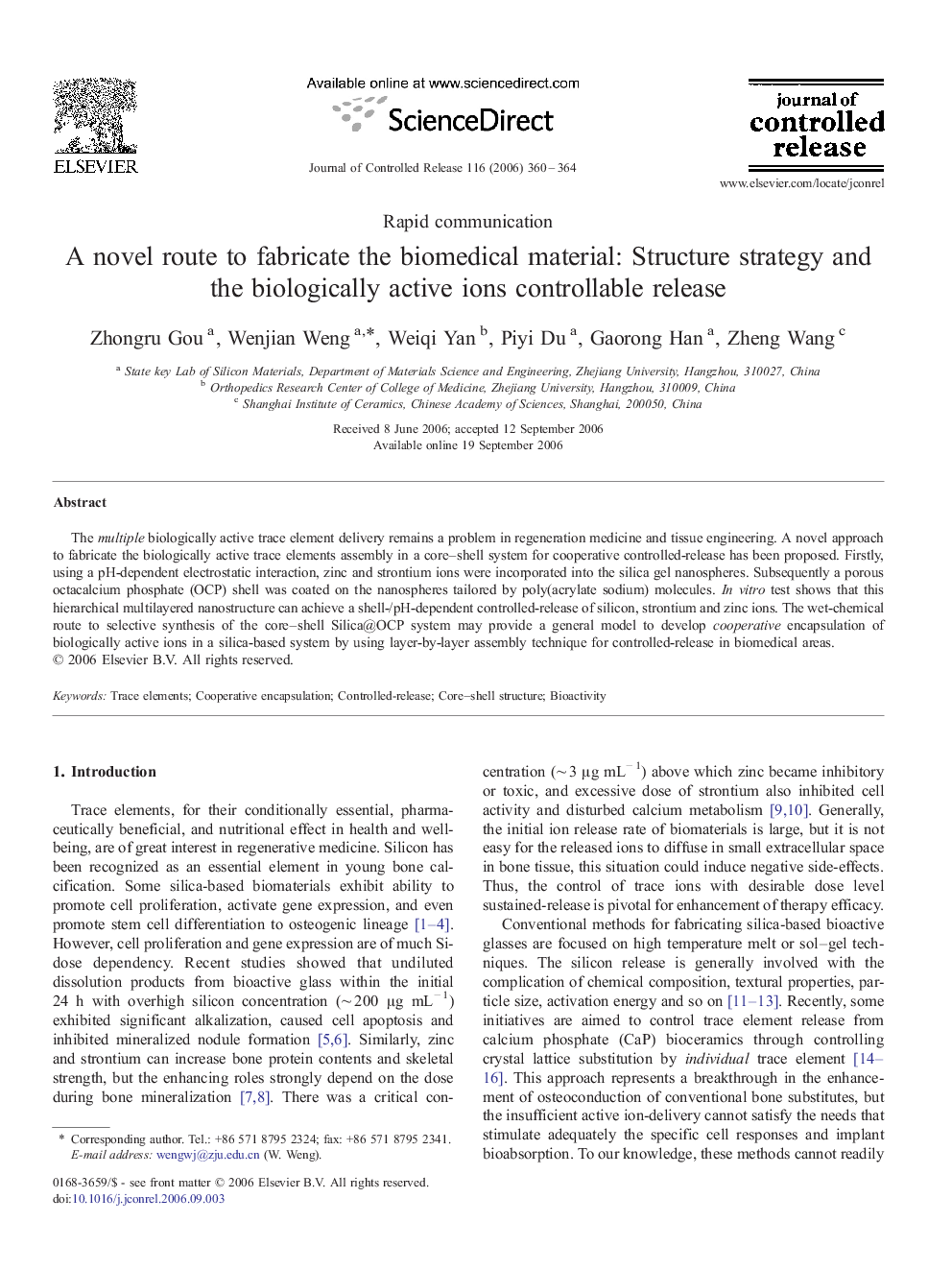| Article ID | Journal | Published Year | Pages | File Type |
|---|---|---|---|---|
| 1427315 | Journal of Controlled Release | 2006 | 5 Pages |
The multiple biologically active trace element delivery remains a problem in regeneration medicine and tissue engineering. A novel approach to fabricate the biologically active trace elements assembly in a core–shell system for cooperative controlled-release has been proposed. Firstly, using a pH-dependent electrostatic interaction, zinc and strontium ions were incorporated into the silica gel nanospheres. Subsequently a porous octacalcium phosphate (OCP) shell was coated on the nanospheres tailored by poly(acrylate sodium) molecules. In vitro test shows that this hierarchical multilayered nanostructure can achieve a shell-/pH-dependent controlled-release of silicon, strontium and zinc ions. The wet-chemical route to selective synthesis of the core–shell Silica@OCP system may provide a general model to develop cooperative encapsulation of biologically active ions in a silica-based system by using layer-by-layer assembly technique for controlled-release in biomedical areas.
